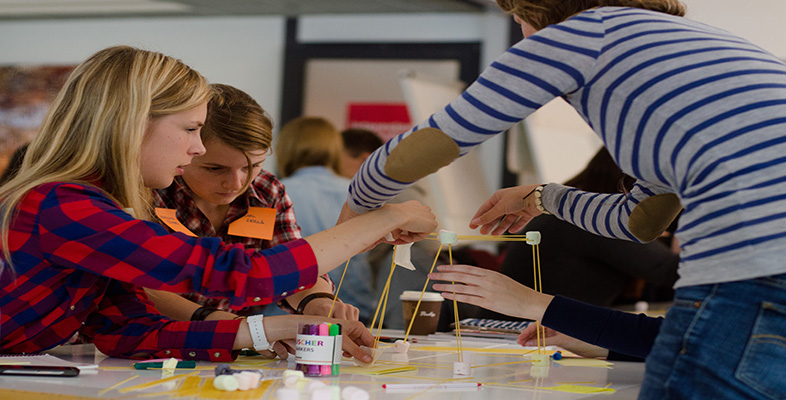2.3 Communication and comparisons
The framework in the next activity provides a useful tool for examining practice in relation to working with colleagues in your core team and professionals in the wider multi-agency context and allows you to make comparisons between settings.
Activity 8 Using a framework to think about communication with colleagues and other professionals
The objective of this activity is for you to use a variety of tools to help you examine your practice.
Consider the questions below and then read the two case studies underneath.
- What are your key reasons for communicating with different audiences? What are your key messages?
- Are your reasons for communicating helping you lead change or lead learning in your setting?
- How do you ensure your key messages are communicated clearly and consistently?
- How does the way you are communicating help you to build trusting and respectful relationships with different audiences?
(taken from Ministry of Education New Zealand, 2023)
Case study 1 Isabel
Isabel, aged 3 years, is described as having autistic tendencies. Susan from the local County Support Services visits Isabel in her day nursery setting every month. She observes Isabel for at least 30 minutes, makes notes and helps Jackie, the key person, to review Isabel’s progress. They work positively together to plan agreed targets to support Isabel’s inclusion, learning and development. Susan and Jackie have a meeting for at least an hour, to discuss Jackie’s observations and use these as a basis for agreeing and setting the new targets. Isabel is making steady progress and achieving her targets. If Isabel’s parents cannot attend the meeting, Susan writes a report for them and makes suggestions as to how Isabel could be supported at home. Jackie discusses the new targets with her colleagues and asks for their views, so they can all work together to help Isabel achieve her potential. When Susan leaves she reminds Jackie that she is available by telephone if any additional advice is needed.
Case study 2 Corey
Corey, aged 4 years, has significant speech and language delay and some hearing impairment. The speech therapist, Lin, visits him every Monday afternoon. On the first visit she spoke to Lisa, the setting manager, and showed her information about various levels of hearing loss. Lisa placed the paperwork in her file. She carried out her own observations but did not look at Lisa’s observations. On subsequent visits she worked with Corey for 30 minutes each week, on a one-to-one basis in the quiet room and then leaves without discussion with staff. She sends in a report to Lisa by email with some suggested strategies to develop Corey’s expressive language. Lisa files the report.
Now note down your answers to the following questions.
- How does the practice of each case link to the questions posed at the start of this activity?
- Explain how those in the case studies collaborate together? What does this tell you about the importance they place on sharing information and skills?
- Why do you think they believe the sharing of information and skills to be important?
Comment
In the first case study, there is a sense of effective teamwork. The practice links to several of the questions in the list. For example, the relationship between Susan, Jackie and the core team is one that is helping to build trusting and respectful relationships involving collaboration and empowerment. Communication between Susan and Jackie shows different reasons for communicating and this is mirrored in Jackie’s engagement with her colleagues. In the second case study, the communication fits in with the idea of trying to ensure key messages are communicated clearly and consistently. Lin makes no effort to share her expertise or views with the staff in the setting. Likewise, Lisa does not communicate the strategies for supporting Corey to her colleagues. These studies illustrate the importance of communication between practitioners in order to enhance the quality of support the children receive.
